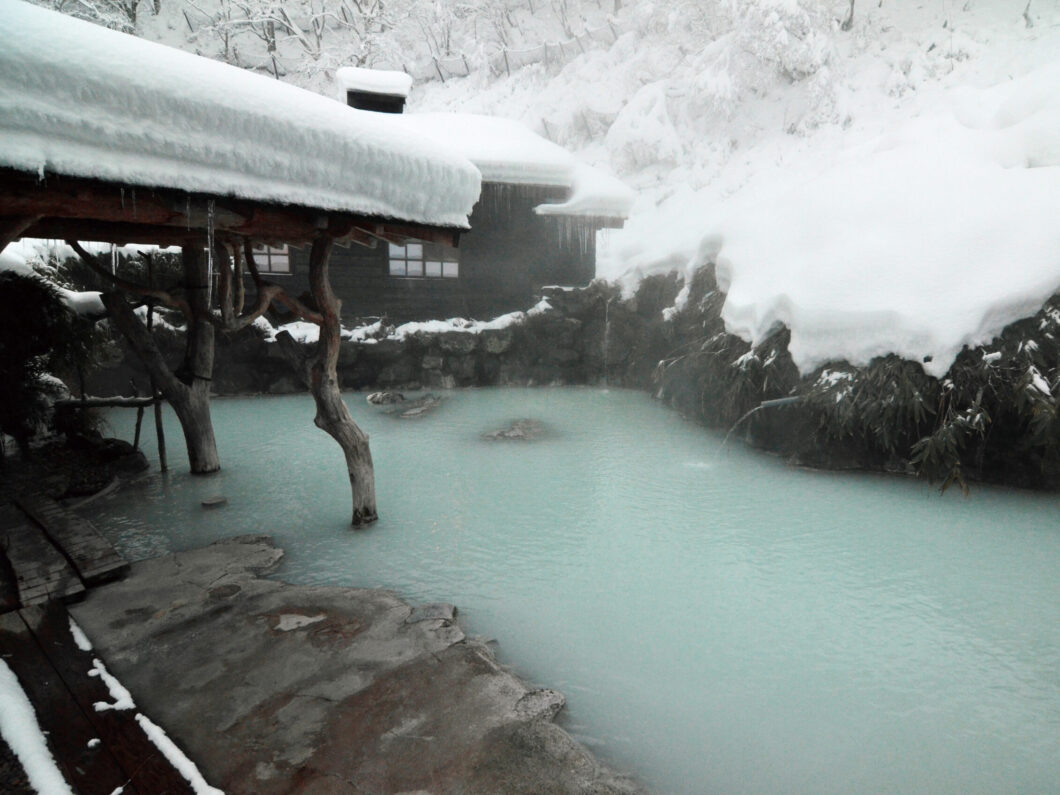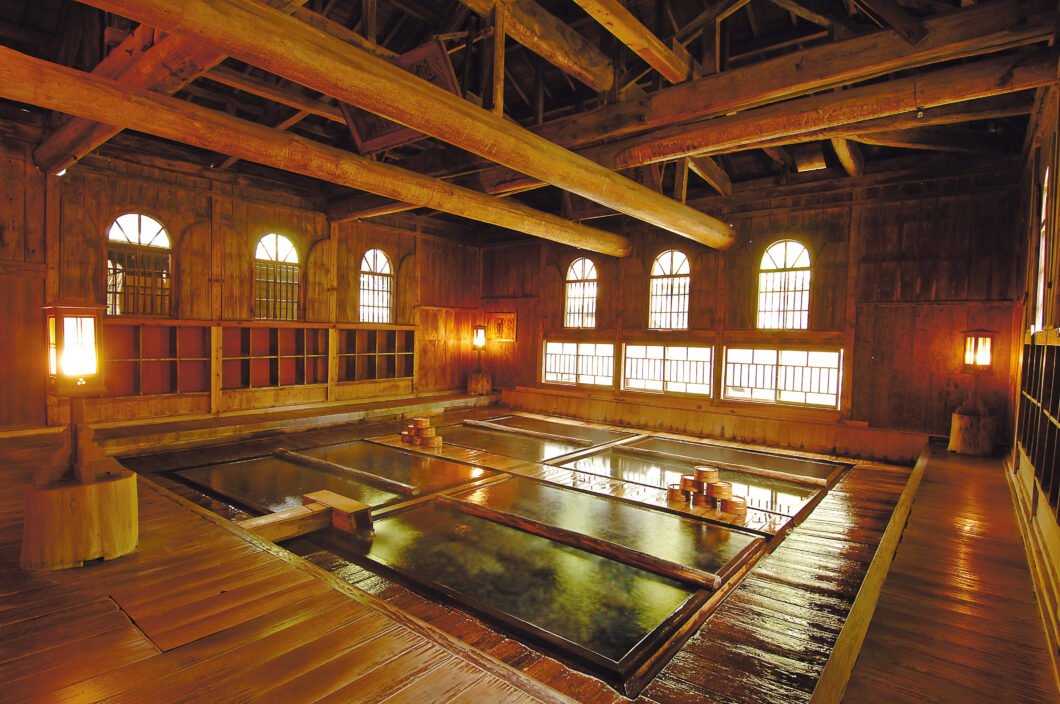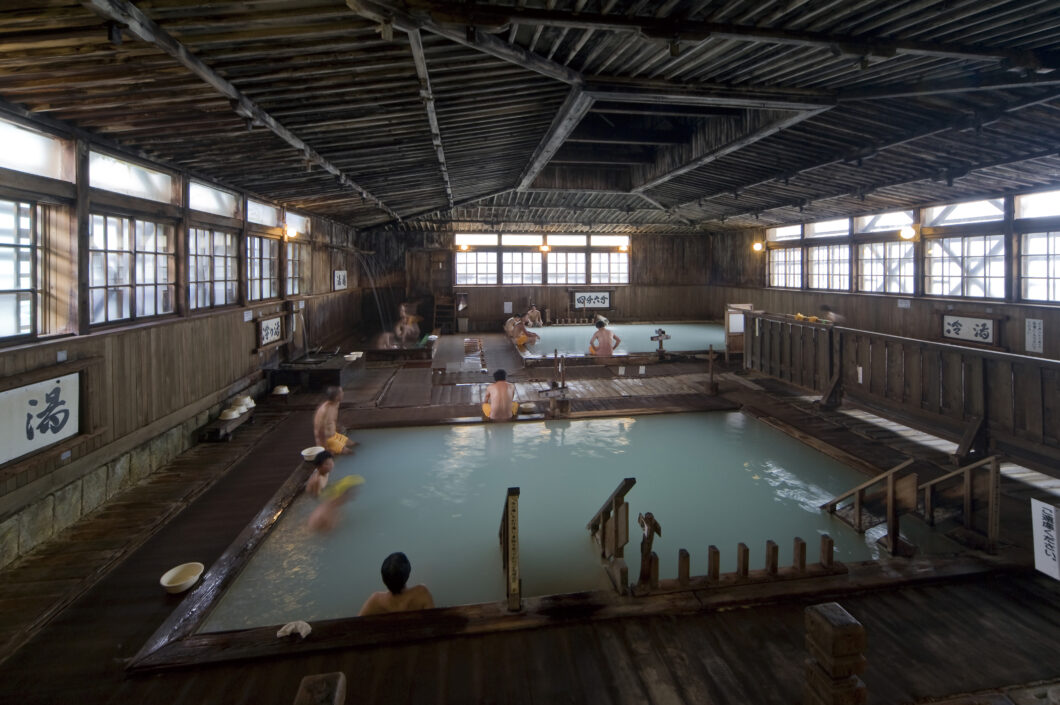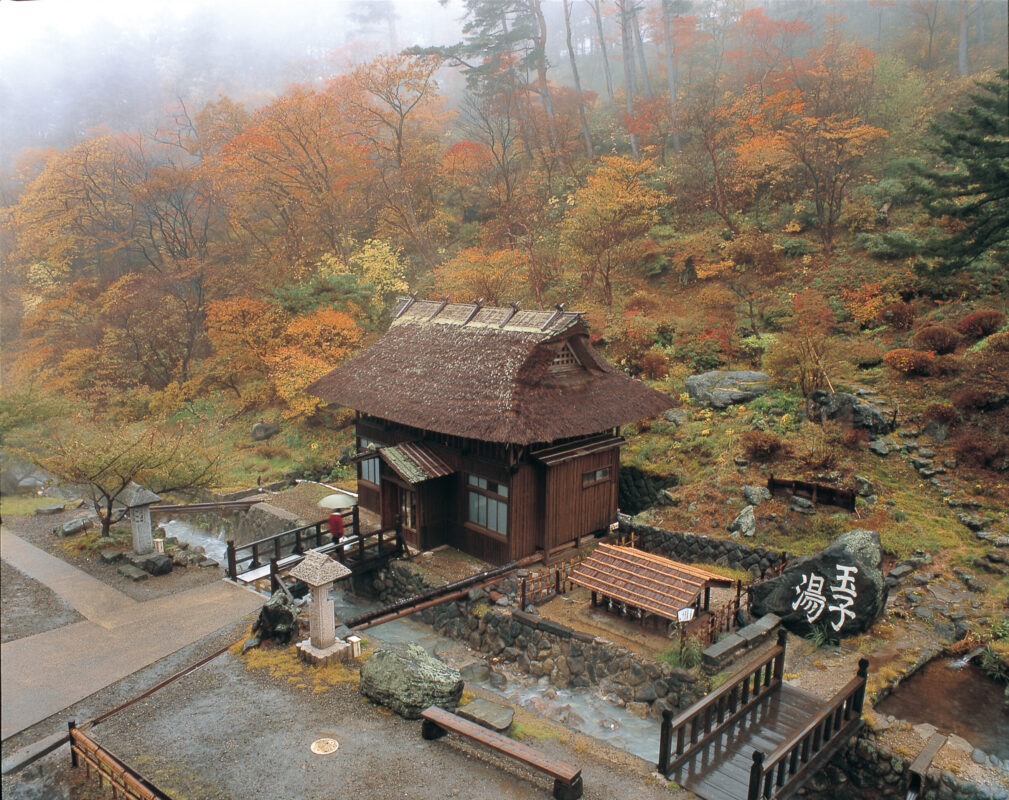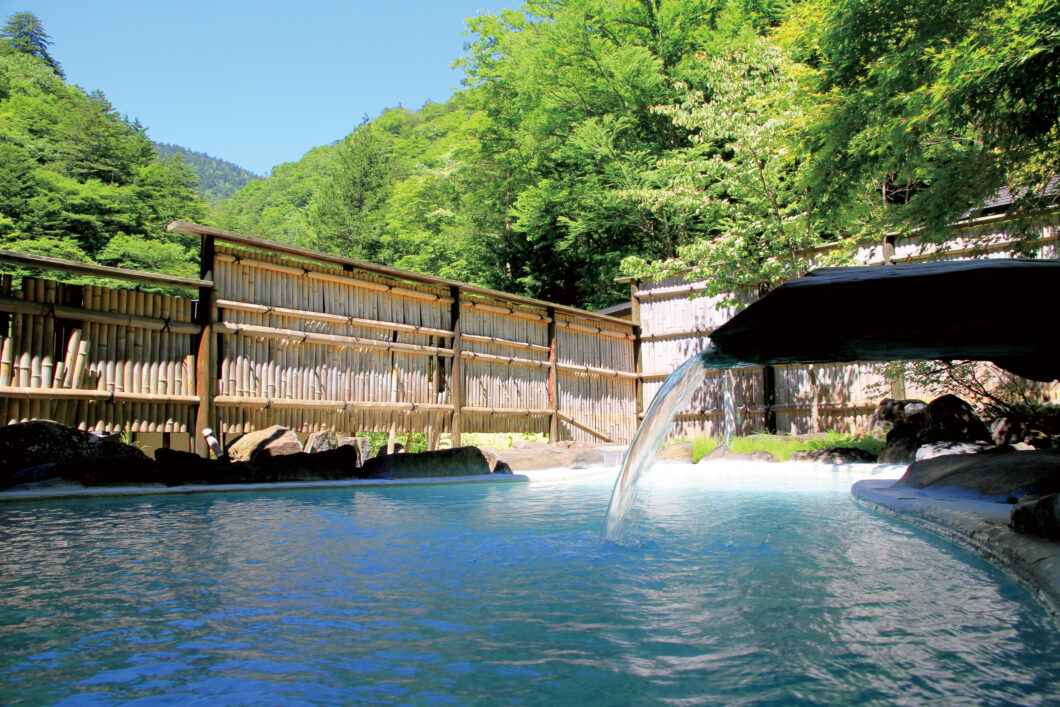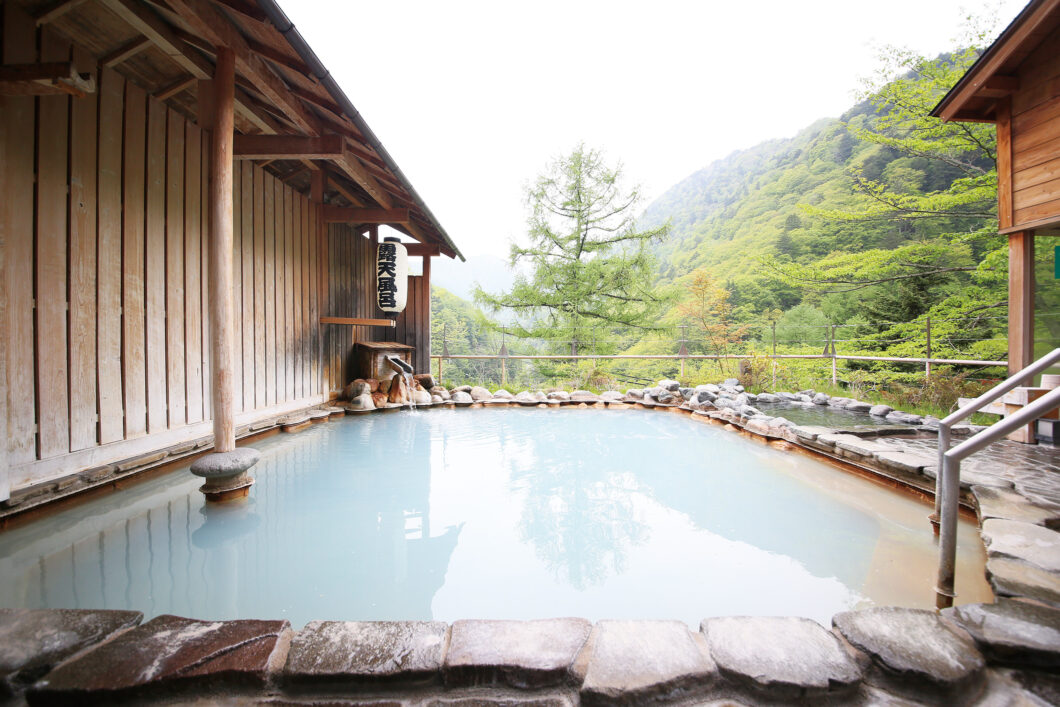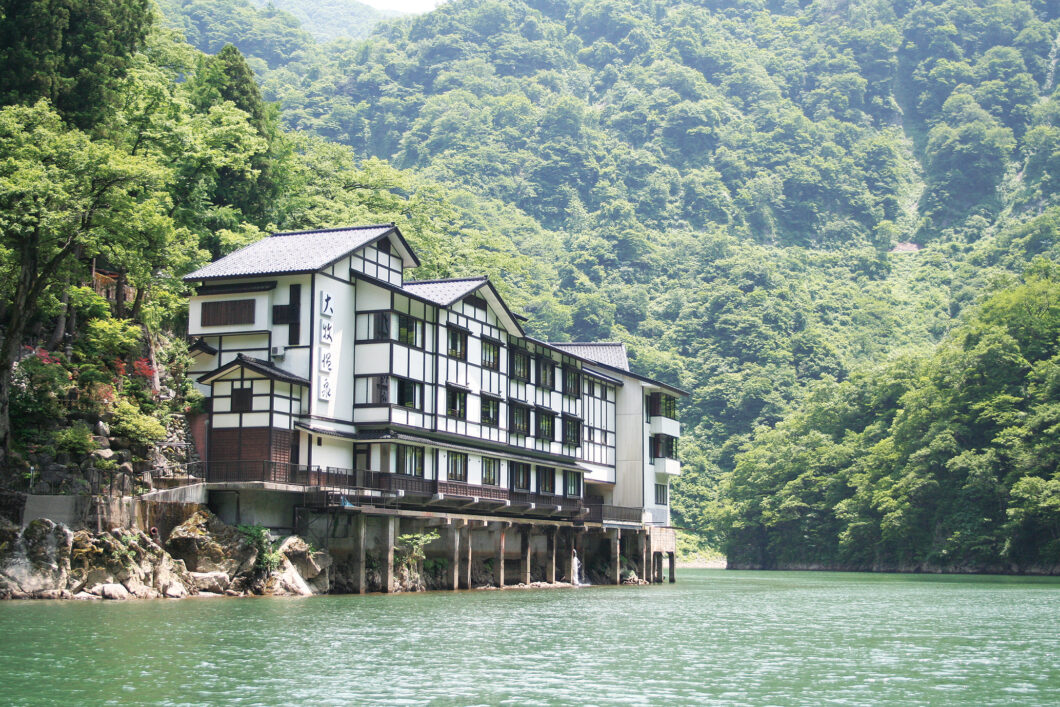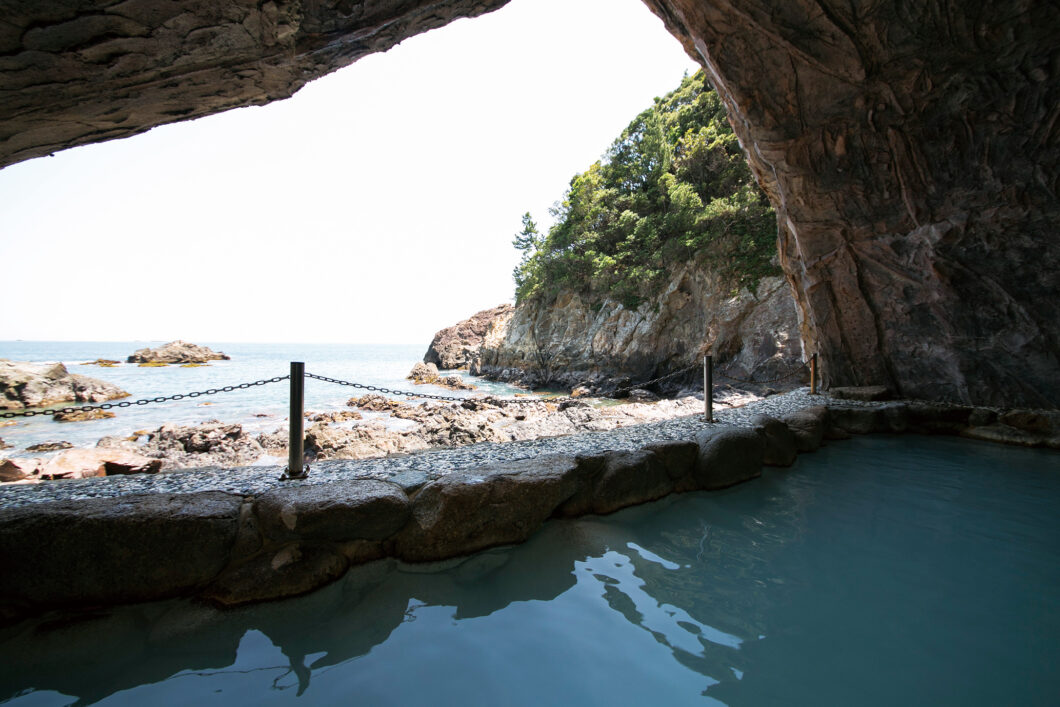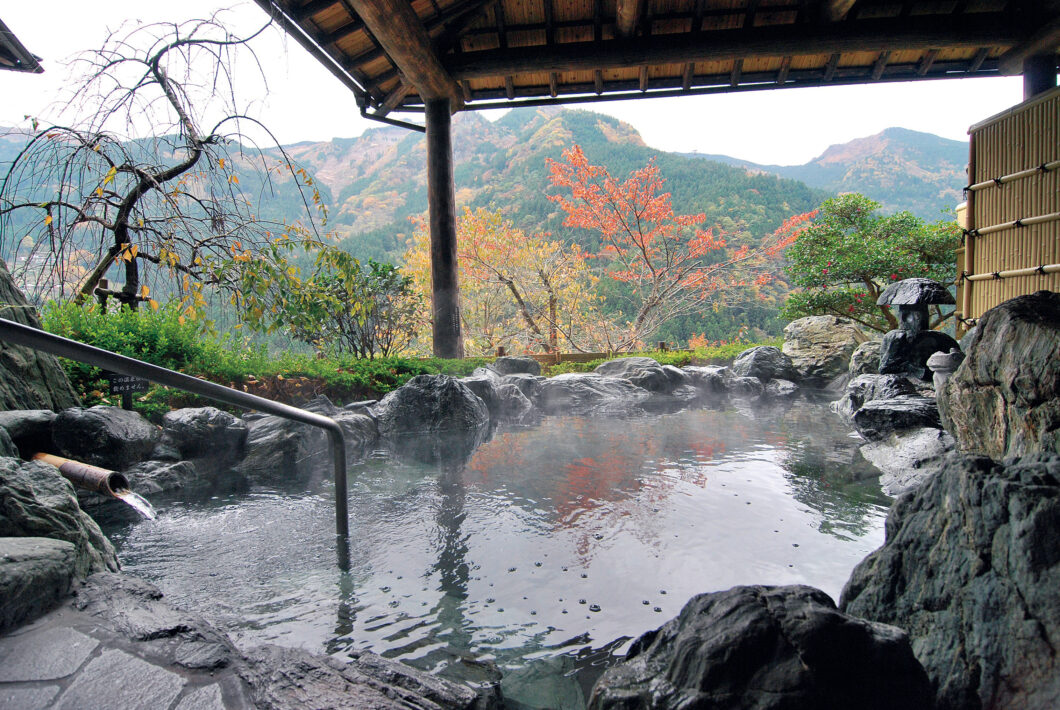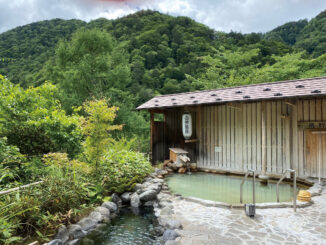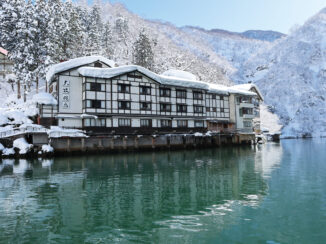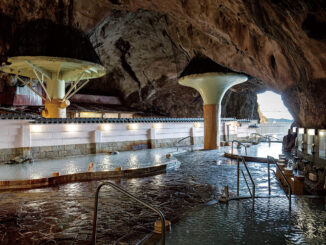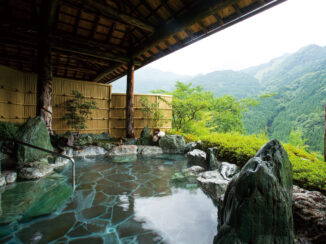Featured
INDEX
A member of the Japan Society for Preserving Secret Hot Springs and a five-star inn
Tsurunoyu Onsen in Akita Prefecture is the oldest hot spring in Nyuto Onsenkyo, and was discovered in 1708 (5th year of the Hoei era). The inn, where the lord of the Akita domain is said to have stayed, is designated as a registered tangible cultural property. The inn can be reached by a regular bus that runs once an hour from JR Akita Shinkansen Tazawako Station, but if you contact the inn, they will pick you up at the bus stop where you get off. Tsuru-no-yu has four different springs with different qualities: white water, black water, middle water, and waterfall. The white water, which has a strong sulfurous scent, is poured into the mixed outdoor bath. It is also known as the "cold water" and is a beauty bath. The black water is the "nukudamari no yu/kodakara no yu," the middle water is the "mekko no yu," and the waterfall is a cascading bath; the baths have different functions.
Chojukan in Hoshi Onsen, Gunma Prefecture, is said to have been discovered by Kobo Daishi. The main building (built in 1875), the mixed bathing large bath "Hoshi-no-yu" (built in 1895), and the annex (built in 1940), all built by the ancestors who inherited the hot springs, are registered as tangible cultural properties.
Hoshi-no-Yu has a hipped roof and a cedar bark roof. It is a wooden Rokumeikan-style building characterized by arched windows and has four bathtubs, each with a log laid across it so that you can rest your head on it and enjoy the freshly-born spring water bubbling up from underneath. This is a rare hot spring that springs up from beneath your feet, even nationwide. The space is just as it was seen in the old JNR "Full Moon" advertisement.
The other is Tamaki-no-yu, which was built in the main building in 2000 and is made entirely of cypress, following the design of Hoshi-no-yu. The main building has been updated to accommodate the trends of the times, but the entrance hall is still the same as when the facility was first established.
Tsurunoyu Onsen and Hoshi Onsen Chojyukan are members of the "Society for Preserving Secluded Hot Springs in Japan" and are five-star inns. Tsurunoyu Onsen has also been awarded the "Premier Five-Star Inn." The spirit of the Society for Preserving Secluded Hot Springs in Japan is "The secret hot spring that suits the traveler's heart is the person." The nostalgia deep in the hearts of Japanese people invites the spirit of travel.
Unpacking at the hot spring inn and learning about its history
The Sukayu Onsen Sukayu Onsen Ryokan , a single inn in the mountains of Hakkoda, Aomori Prefecture, was founded in 1684 (the first year of the Jōkyō era). The attraction is the large bathhouse, the Hiba Sennin Bath, made entirely of Japanese cypress. The 160-tatami-mat bathhouse is filled with four hot springs: Netsu-no-yu, Rei-no-yu, Shibunroku-no-yu, and Yutaki. You can also enjoy the milky sulfur springs in the small bath, Tama-no-yu.
Located about 900m above sea level, Sukayu Onsen is also known as the sacred spring above the clouds. It is said that the combination of the clean air with less ultraviolet rays and allergens and the high altitude climate will cure all kinds of illnesses in 10 days or three times. The five springs are acidic and sulfurous springs with strong enough ingredients to dissolve metals. The springs have been recognized as having therapeutic effects, but if you are seeking hot spring therapy, please consult the hot spring therapy consultation room.
Ryokan Tamagoyu in Takayu Onsen , Fukushima Prefecture, is known for its milky, free-flowing spring water, Tamagoyu, which has been flowing naturally for 400 years. Along with Zao Onsen and Shirabu Onsen in Yamagata, it is one of the three great springs in Oshu. The name comes from the fact that bathing in the hot spring makes your skin as smooth as an egg and that it smells like a boiled egg. There are seven different baths. Among them, the thatched Tamagoyu hut was built in 1868 and has withstood the wind and snow for 150 years, making it the inn's pride and joy. It is a very tasteful bath that evokes the therapeutic baths of the past.
It is said that Kaizan Nakazato got the idea for " Yumoto Saito Ryokan in Shirahone Onsen spring area was called "Shirakufune" (White Boat) because the hot spring components would adhere to the bath and turn it white, but Kaizan wrote it as "Shirakufune" and the name eventually stuck. " Shirafune Grand Hotel " is the only inn in the area that still bears the name, and it is also the only inn in the area where you can enjoy two hot springs: an open-air bath with a hydrogen sulfide spring and an indoor bath with a bicarbonate spring.
A boat trip. A boat trip across a canyon.
Even before the COVID-19 pandemic, the number of foreign tourists in Shonai Gorge in Toyama Prefecture exceeded 10,000 per year. The peak season for foreign visitors is from January to March, when both banks of Shonai Gorge (the dam lake) are covered in snow, adding to the atmosphere. A steady stream of visitors comes to enjoy the Oomaki Onsen Kanko Ryokan , a single inn built on the cliffs. The Oomaki Onsen Seiryuugen spring, a mixture of chloride and sulfate springs, bubbles up from the bottom of the Shogawa River. It flows generously into the rustic open-air bath and the large and medium-sized baths with great views. The ultimate luxury at this inn is said to be to do nothing but soak in the hot spring. Fishing for dace and rainbow trout is also an extraordinary experience.
There is another inn that can be reached by boat. Hotel Urashima , which has exclusive access to the Noroi Peninsula, can be reached by private boat from Nachikatsuura Port in Wakayama Prefecture. At the top of the mountain, Sanjokan offers a panoramic resort experience. Take the 154m escalator down to the large caverns of Boukido and Genbudo, which have open-air baths beneath the peninsula. The rough waves echo through the rugged space that is unique to the rias. The rippling hot spring water is a mixed spring that is collected from five sources on the premises.
At the top of the cable car, Hotel Kazurabashi in Shin Iya Onsen , a spectacular open-air bath awaits. Iya, once difficult to travel to from the outside world due to its canyons and mountains, has some unique scenic spots. For example, the deep, V-shaped Iya Valley, with the malachite green Iya River flowing below, is so beautiful it's dizzying to look into. A rock used for tests of courage juts out of the cliff, and a statue of a peeing boy stands there. Ochiai village, a nationally designated Important Preservation District for Groups of Traditional Buildings, has an elevation difference of about 390m, and houses and stone walls built between the mid-Edo period and the early Showa period remain on the steep slope. The scenery is the very image of the original mountain village.

